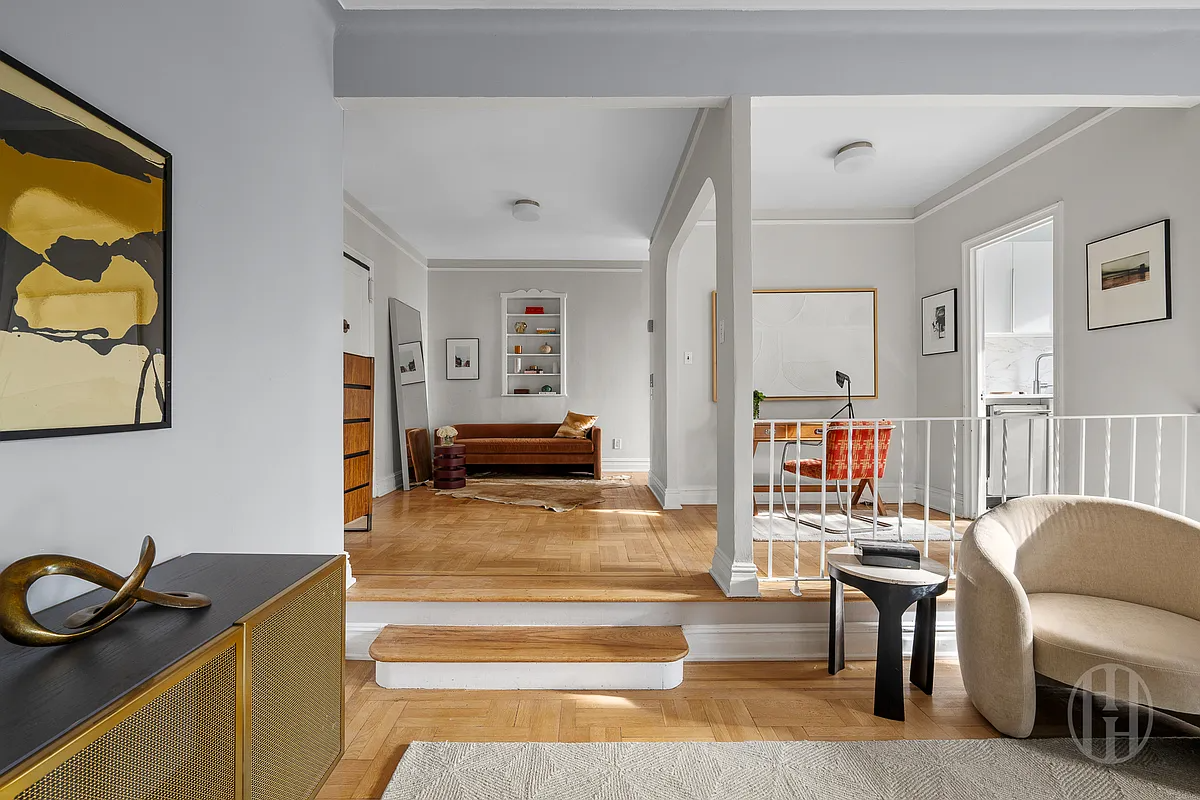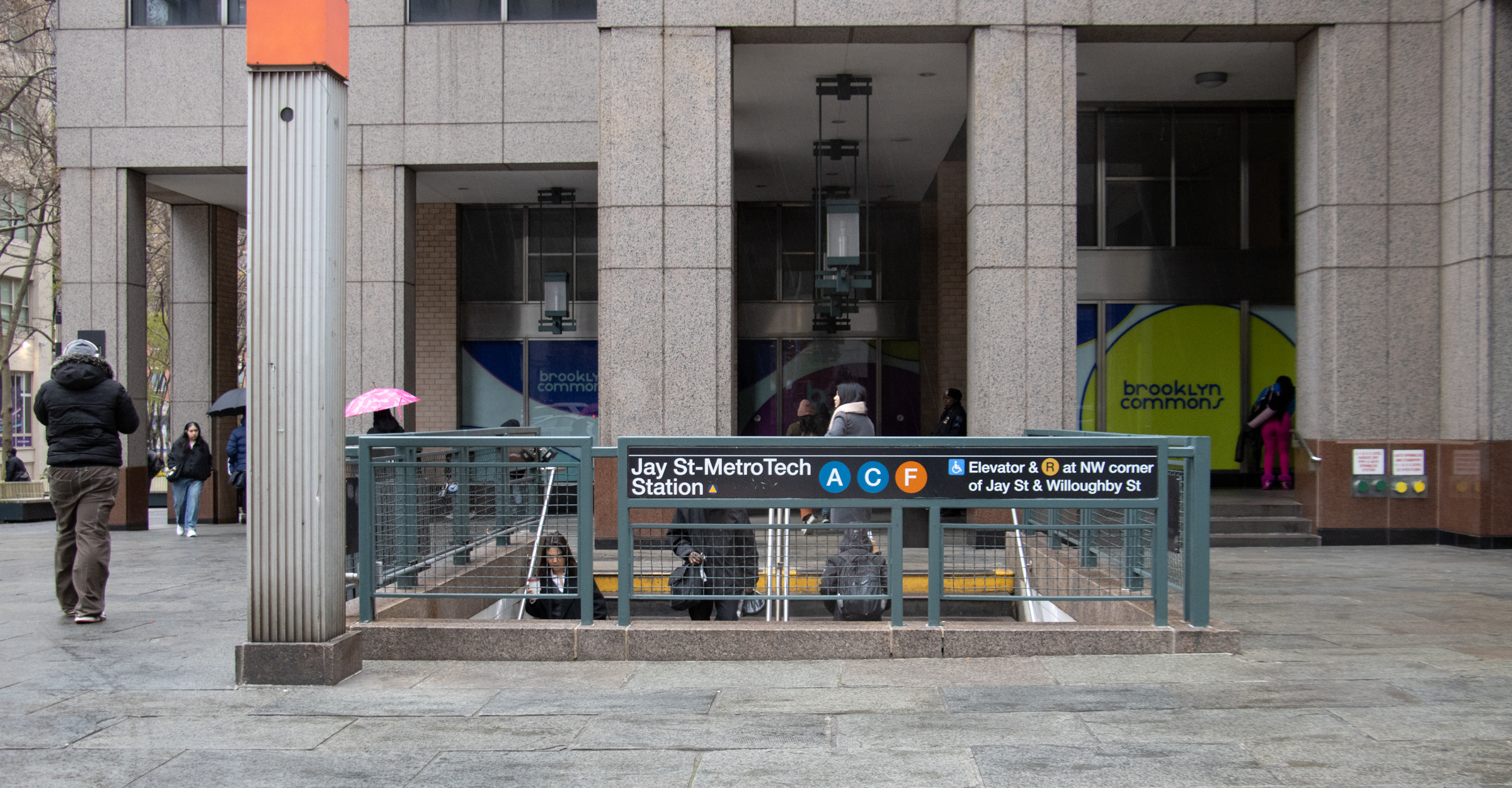A Call for a Moratorium on AY Demolitions
In the wake of news that Atlantic Yards plans are stalled, the Dean Street Block Association (6th Avenue to Vanderbilt section) is asking the state to immediately halt demolitions on buildings in the project’s footprint. The group sent a letter (copy on jump) to Governor Paterson and ESDC head Avi Schick requesting a temporary moratorium…


In the wake of news that Atlantic Yards plans are stalled, the Dean Street Block Association (6th Avenue to Vanderbilt section) is asking the state to immediately halt demolitions on buildings in the project’s footprint. The group sent a letter (copy on jump) to Governor Paterson and ESDC head Avi Schick requesting a temporary moratorium on the destruction of buildings on the project site, particularly those that are being torn down for the second phase of Atlantic Yards. At present, the Ward Bakery building is being demolished, and the group’s letter says the “building is eligible for listing on the State and National Register of Historic Places.” The occupied townhouses in the photo at left, above, are also slated to come down. The concluding paragraph of the letter notes, “Please implement a moratorium on demolition until such time that the communities surrounding Atlantic Yards can be assured that rational decisions are being made to protect the area from the blight associated by dormant sites, over-scaled inefficiently situated construction staging, and surface parking lots.” This does indeed sound “rational.” What sense does it make to tear down buildings—especially one as treasured as Ward Bakery—for a development that may never happen?
Endangered AY [Brownstoner]
Ward’s Watch: Prepping By The Parapet [Brownstoner]
Photos by Tracy Collins.
Dear Governor Paterson and President and Chief Operating Officer Avi Schick;
Over the past few weeks we have learned that the schedule for construction of the Atlantic Yards Project is far longer than originally planned, and that there is doubt about whether Phase II of the Project as originally planned will ever reach the construction stage. Despite this news, there is ongoing demolition activity at the project site which may now be wholly unnecessary and which is having and will continue to have a long-term significant impact on the surrounding community. We are writing to ask that you cease all demolition on the site temporarily, and in particular on the footprint of Phase II. Before moving forward there must be a new review of the construction schedule, sequencing, and rationale in light of the changed circumstances.
The funding agreement between Forest City Ratner Companies and the Empire State Development Corporation signed in October 2007 and released last week includes no commitment from the developer to the State of New York to execute the second phase of the Project. It further reveals that those project components covered by commitments in the funding agreement—i.e. Phase I–may be built out following an extended construction schedule. As a result, the announced timeline for the project is no longer functional and there are no meaningful obligations we are currently aware of that require the developer to complete the Project.
Demolition of the buildings on the Phase II footprint is ongoing. In particular, the demolition of the Ward Bread Bakery building and its facade is imminent. This building is eligible for listing on the State and National Register of Historic Places, and the FEIS found its destruction to be a significant adverse impact. Likewise,
we believe the imminent demolition to make room for a construction office of the townhouses that extend on Dean Street from 6th Avenue to the Swedish Baptist Church National Historic District will impact the fabric of the surrounding area.
The context for the demolition of the second phase footprint this early in the construction of the project is still to make room for the residential buildings, open space and indoor parking lots located in the second phase footprint by the general project plan. The temporary and interim uses contemplated for the footprint—mainly as a parking lot for the construction workers on Phase I, and later possibly as parking for arena patrons–were conditional on the future plans for the site necessitating the demolition of the area anyway. It was not anticipated that the buildings be demolished to make way for interim or temporary uses only.
The revised timetable undercuts a number of assumptions about the temporary and interim uses of the Phase II footprint, such as:
∑ The peak number of construction workers on site was established based on the assumption that all of Phase I would be built at the same time. Now only the arena is to be built in the first stage of the first phase.
∑ The suspended build-out of Miss Brooklyn and the cluster buildings around the arena provides unforeseen locations for the construction staging, holding areas for deliveries and construction worker parking. These areas are superior to the areas assigned for those uses in the general project plan because there is direct access from truck routes and they will draw a lower amount of traffic for the shortest distance down local roads.
∑ The apparently extended timetable for the moving of the railyard may allow for more flexibility in its construction, lowering the necessity of placing supporting services for its construction outside the railyard itself. The railyard footprint, much of it below grade and/or directly off of truck routes, may be not maximized in the construction plans as they are currently proposed.
The Prospect Heights area where the second phase of the project is located is comprised of a stable and growing community of unique historic character. All of its streets in the vicinity of the project, including Dean Street, Pacific Street, and
Carlton Avenue are lined with primarily residential uses that should be protected from unnecessary impacts from the construction plans of the Atlantic Yards project.
Please implement a moratorium on demolition until such time that the communities surrounding Atlantic Yards can be assured that rational decisions are being made to protect the area from the blight associated by dormant sites, over-scaled inefficiently situated construction staging, and surface parking lots. We ask the State not to lose sight of the principal purpose it has identified for the Project, which is to eliminate blight.
Sincerely,
Peter Krashes, Board Member signing for the Dean Street Block Association, 6th Avenue to Vanderbilt Avenue Board:
Serena Mulhern, President
Rhona Hetsrony, Vice President
Sal Raffone, Treasurer
Doug Derryberry, Secretary
CC: Assemblyman Hakeem Jeffries; Council Member Letitia James; Senator Eric Adams; Senator Velmanette Montgomery; Councilmember David Yassky; Assemblyman James Brennan; Councilmember Bill de Blasio; Assemblywoman Joan Millman; Honorable Marty Markowitz Brooklyn Borough President; Ombudsman Forrest Taylor, Chairperson Robert Matthews; District Manager Doris Alexander; Chairman Richard Bashner, District Manager Craig Hammerman; Chairperson John Dew, District Manager Robert Perris; Chairperson Richard Bashner; District Manager Craig Hammerman; Commissioner Patricia J. Lancaster; Commissioner Amanda Burden





“Since the Arena is the only structure slated to be built because of whatever reason du jour, there will be NO future residents of Atlantic Yards.”
This is where you and other anti-AY NIMBYs have it wrong. Ratner has never said that he plans to scrap the project, only delay it. Somewhere along the way, you and others have misinterpreted the word “delay” for “termination”.
3:52 – I could just as easily cherry-pick a development area that has come to fruition and then conclude the opposite
Polemicist – 4:26 again – developers need to earn a fair rate of return in exchange for the risk of developing, and the profits should benefit all. But do you really feel the developer was taking risks? When after stringing us all along for years they can just park the project because the profits are no longer gauaranteed while it sits there tied up and half demolished? Really? This was not a free market project, normal economics never applied; it’s all insider trading. And what I said was not that all buildings in the area are suitable for high density developement; I said that buildings like Ward could be incorporated. Like as in rehabiliated and put to new use in the complex. Are you aware of building s in the AY footprint? Aren’t they tearing down newly reovated condos they bought people out of at exhorbitent sums? Of course they can afford that because of the extraordinary profits they are earning on this, don’t you think? Think about it.
I agree the Ward bakery is certainly a treasure,-let’s bury it!
Polemicist:
“The developer benefits, but so too do the thousands of residents who will call Atlantic Yards home. Further, as these residents will pay a variety of taxes to the city, it is in fact a transfer of wealth TO the city. This is in fact the whole legal justification for the eminent domain action.”
Half of your statement is correct – the developers will definitely benefit. No one is arguing with that. But future Atlantic Yards residents?! Since the Arena is the only structure slated to be built because of whatever reason du jour, there will be NO future residents of Atlantic Yards. Eminent Domain in this case is NOT a transfer of wealth to the city since people who are paying taxes are losing their homes so those lots will then sit vacant for years to come only to have tax abated, subsidized housing built on them. How is the city making money?
“Building new housing increases city revenues, which provides all the social services the people demand. It indirectly benefits the city by lowering the cost of housing.”
Where do you live? As I pointed out above, new housing has nothing to do with social services. If anything, new development further stresses the antiquated systems we already have in place. And I don’t know about you, but how exactly has the cost of housing been lowered by all of the recent new construction?
3:08
I’m of course not saying people can write petitions to the government regarding their grievances. That, however, is not democracy. Even the colonists prior the Revolutionary War sent petitions to King George.
I would hardly call THAT democracy, or representative government, in any way shape or form.
4:26
Do we say that farmers are the only ones to benefit from selling food? No, the people who eat it also benefit. The developer benefits, but so too do the thousands of residents who will call Atlantic Yards home. Further, as these residents will pay a variety of taxes to the city, it is in fact a transfer of wealth TO the city. This is in fact the whole legal justification for the eminent domain action.
Building new housing increases city revenues, which provides all the social services the people demand. It indirectly benefits the city by lowering the cost of housing. For New York City to remain competitive, employers must be able to pay employees less, and that can only happen with the construction of new housing. Probably 100 Atlantic Yards developments would have to be built such that the vacancy rate in the city approaches the national average – but this is one fairly large step in a good direction.
You also are not very aware of these existing buildings. The vast majority are not suitable for high density residential development. They are ancient, obsolete structures whose time has come to be replaced with modern housing.
leaving prospect heights was one of the happiest days of my life.
neighborhood? sure, if you are on the dole!
super ghetto area. nasty ghetto thugs.
train yards themselves are disgusting.
please please let AY move forward.
amazing project for the area and brooklyn.
The AY area is hardly blighted, but it is underutilized. It should be utilized for some combination of housing and public space, but the AY package is/was a rip-off for anyone who doesn’t stand to benefit directly from it, i.e. the developer and his cronies. It is a transfer of wealth from the city and its taxpayers to these people. Now that it’s been fessed up that it’s not getting built in the near future, tearing down more existing structures is pointless. And it’s a shame, Landmarked or not, when old builings are demolished which could be renovated and incoprated into new development.
“Demolition is not blight, but a temporary byproduct of construction.” Yeah, right. Tell it to the people near the Schermerhorn-Pacific Urban Renewal Area, which was ‘by-producted’ for thirty years.
12:06 and 1:14,
Demolition is not blight, but a temporary byproduct of construction. Yes, the railyards are blighted, and, yes, the area is underutilized, based on its location near a major transit hub. This is why the area has been declared blighted, not because of demolished buildings.
I don’t begrudge the DSBA for writing the letter or deny their right to do so, just pointing out that this, like 99% of the anti-AY efforts, will amount to zilch in the real world.